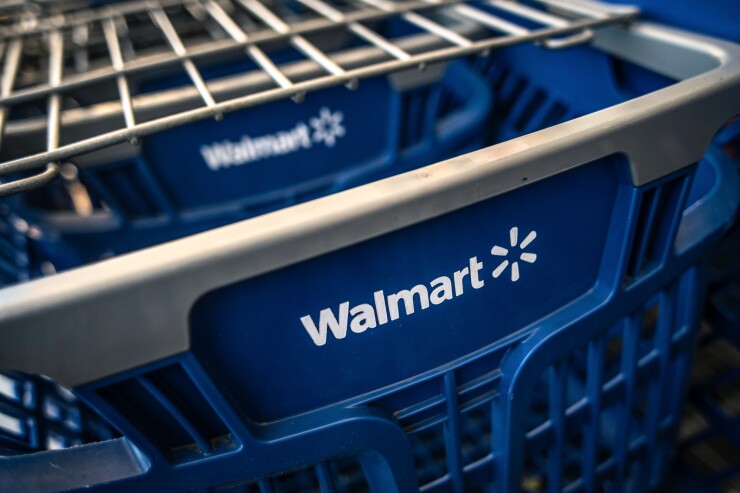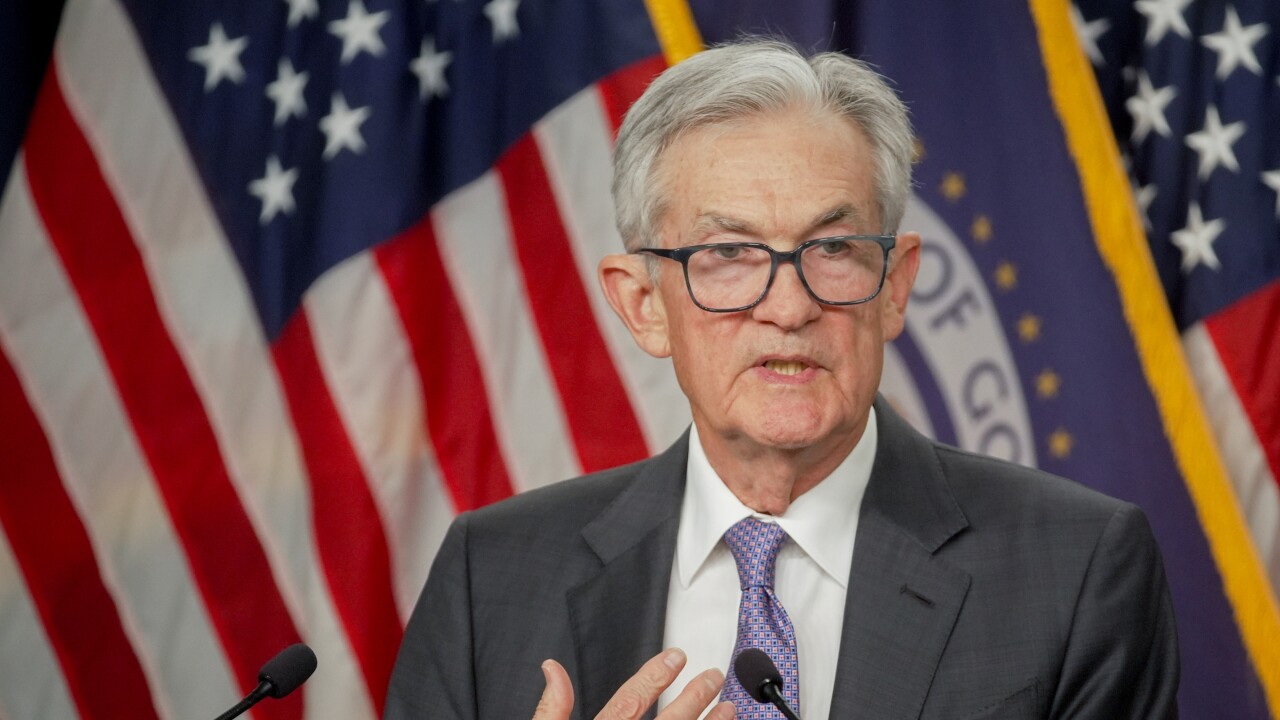
In addition to big banks, large merchants are also taking notice of the stablecoin rush, given the ability of the digital asset to revolutionize key parts of their payment strategies.
Walmart and Amazon are among the retailers considering issuing their own stablecoins, according to
But for U.S. retailers, there is likely a different motivation. Stablecoins provide myriad ways to streamline processing and take advantage of
"Given the potential benefits just in reducing acceptance costs, there should be no surprise that retailers like Walmart and Amazon are exploring stablecoins," James Wester, director of cryptocurrency research for Javelin Strategy and Research, told American Banker.
What are Amazon and Walmart doing?
Amazon and Walmart did not return requests for comment. Whatever work they are doing on stablecoins is likely in the early stages, and could include the retailers issuing individual coins, or working as part of a consortium.
The expected passage of the
Friday's media reports about merchant stablecoins comes about a decade after the
So is a merchant stablecoin a new CurrentC?
"This is very different from the CurrentC effort," Wester said, adding a stablecoin for a retail application would likely be more akin to a prepaid program where consumers would preload a wallet with the stablecoin and use it to fund payments. "From the consumer perspective, it would, or should, be seamless and just like spending regular dollars."

Like many
If buying the stablecoin and loading an application is managed through the
"It would also then eliminate fees for payments made using the stablecoin," Wester said. "That's the ultimate goal: lowering acceptance costs. Incentives to purchase the stablecoin could be offered in the form of discounts or loyalty, but getting consumers on board will be one challenge."
A prepaid gift card that is only spendable at a single retailer is the lowest cost, highest loyalty tender type, Richard Crone, a payments consultant, told American Banker, noting that premium credit cards are the highest cost tender.
And while much of the discussion of using stablecoins for payments involves the
For example, Crone estimates that a 1% shift in PayPal's total payment volume from highest- to lowest-cost tender yields $1.86 billion in annual savings. The same shift for Amazon equals $1.5 billion in savings, Apple $1 billion and Walmart $783 million.
"That's just from embedded tender steering via a proprietary payment credential such as a merchant-issued stablecoin," Crone said. "This is why stablecoin-as-tender is a margin play, not a currency hedge. The real driver is replacing high-interchange, high-fraud rails at checkout."
The customer experience and behavioral incentives are the hurdle, Crone said, noting the failed CurrentC was partly driven by those shortcomings.
"This time around, agentic payments will solve that," Crone said, adding that agentic AI enables stablecoin funding to be embedded in native merchant apps with a consumer's preferred credentials.
Agentic AI, which enables certain tasks to be performed with minimal or no human intervention, can be part of a smooth user experience for stablecoin payments. Since stablecoins are unlikely to be used to pay directly, the process requires an easy conversion to and from traditional currency at each end of the payment.
The expected boom in stablecoins is also coming as most major
"Bottom-line: Stablecoins are the programmable funding layer in the agentic payments stack," Crone said.
Are Amazon and Walmart jolting the payments market?
But stock analysts suggest that sell-off is overdone. "We do not believe stablecoins are well suited for B2C commerce, even as merchants view them as a potential means of lowering card acceptance costs," William Blair analysts said in a research note, adding consumers are habituated to the ease of use, security and protections of traditional credit cards.
William Blair also pointed out that Visa has made moves to benefit from the growth of stablecoins. Both
Widespread adoption of a merchant-issued stablecoin is likely to be a long, uphill battle as there is limited increase in utility for consumers, unless retailers provide an incentive for customers to move to the stablecoin network, KBW said in a research note.
"If combined, large merchants could have some scale," Tony DeSanctis, senior director at Cornerstone Advisors, told American Banker. DeSanctis added that similar to CurrentC, there are consumer adoption concerns.
"This essentially becomes another wallet or payment solution and I think we could be reaching saturation," DeSanctis said. "Pay by Bank, credit card, debit card, private label card and now stablecoin might be too much for consumers. The benefit to the consumer is the biggest question. Without that, adoption never happens and inertia wins the day."






